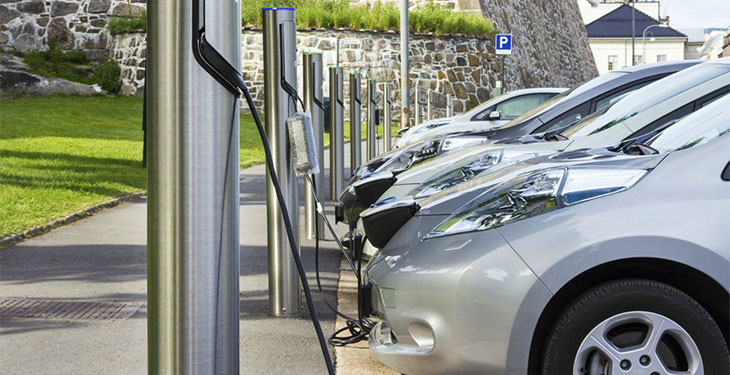During the Digital Transport Day in Tallinn, partners of the NEXT-E consortium signed on Thursday a grant agreement with INEA which will enable the building of a charging network for EVs across six countries in Central and Eastern Europe: The Czech Republic, Slovakia, Hungary, Slovenia, Croatia and Romania. In July 2017, the NEXT-E project was selected by the European Commission for co-financing through the Connecting Europe Facility (CEF), a release reveals.
The NEXT-E consortium will be granted EUR 18.84 million to implement the project, which is the largest CEF grant ever awarded to an EV project. Within the framework of this project, the consortium will install 222 multi-standard fast chargers (50 kW) and 30 ultra-chargers (150-350 kW) along TEN-T core corridors and core network. For the first time ever, long distance travel, based 100% on electricity, will be possible across 6 Cohesion countries, with connection to the neighboring countries.
The NEXT-E project represents a unique cooperation of four leading companies from the electricity and oil & gas sectors joining forces with OEMs (car manufacturers) to create interoperable and non-discriminatory EV charging network, as a viable alternative to the combustion engine vehicles. The consortium consists of companies of E.ON Group (Západoslovenská energetika in Slovakia, E.ON Czech Republic, E.ON Hungary, E.ON Romania), MOL Group (represented with subsidiaries in all 6 participating countries), Hrvatska elektroprivreda in Croatia, PETROL (in Slovenia and Croatia), as well as Nissan and BMW.
”Next-E is politically an essential innovation project, which took great efforts from industry and encouragement and support from the European Commission side to take place. In addition, the close collaboration with other neighboring projects is evident, emphasizing the maximizing European impact and dimension of the core network corridor policy. – The objective of our policy is to finally allow citizens to travel with alternatively fueled vehicles across the entire EU,” said Herald Ruijters, Director, DG MOVE, Directorate B – Investment, Innovative & Sustainable Transport, European Commission.
Currently, EV charger deployments are scattered and often un-coordinated, posing a risk of overlaps or gaps in the network. The NEXT-E project was launched to address this challenge, and to create a continuous and cost-effective network that ensures the ability for long-distance and cross-border driving. The project will also leverage existing experience into countries without significant EV activities to date, such as Hungary and Romania. In order to ensure interoperability to the West and create a one fully connected network, the project will be coordinated with other ongoing CEF co-financed projects, i.e. ULTRA-E, EAST-E and FAST-E.
The deployment of fast chargers is expected to start in 2018, while the installation of the ultra-chargers is planned for 2019 in order to prepare for the arrival of a new generation of long-distance EVs. The full deployment is expected to be concluded by the end of 2020. The Next-E project is a unique partnership of leading companies in the electricity and oil & gas sectors, as well as OEMs, who joined forces to create an interoperable and non-discriminatory charging network for electric vehicles across the main TEN-T corridors in Central and Eastern Europe. The consortium consists of the E.ON Group companies (Západoslovenská energetika in Slovakia, E.ON Czech Republic, E.ON Hungary, E.ON Romania), MOL Group companies (represented via subsidiaries in all six participating countries), Hrvatska elektroprivreda in Croatia, PETROL (in Slovenia and Croatia), as well as Nissan and BMW.
The network will be comprised of 222 multi-standard fast chargers (50 kW) and 30 ultra chargers (150-350 kW), and will create a crucial EV charging infrastructure in the Czech Republic, Slovakia, Hungary, Slovenia, Croatia and Romania. The Next-E network, expected to be fully deployed by 2020, will be interoperable with Western Europe thanks to coordination with other projects co-financed through the EU’s Connecting Europe Facility (CEF).
